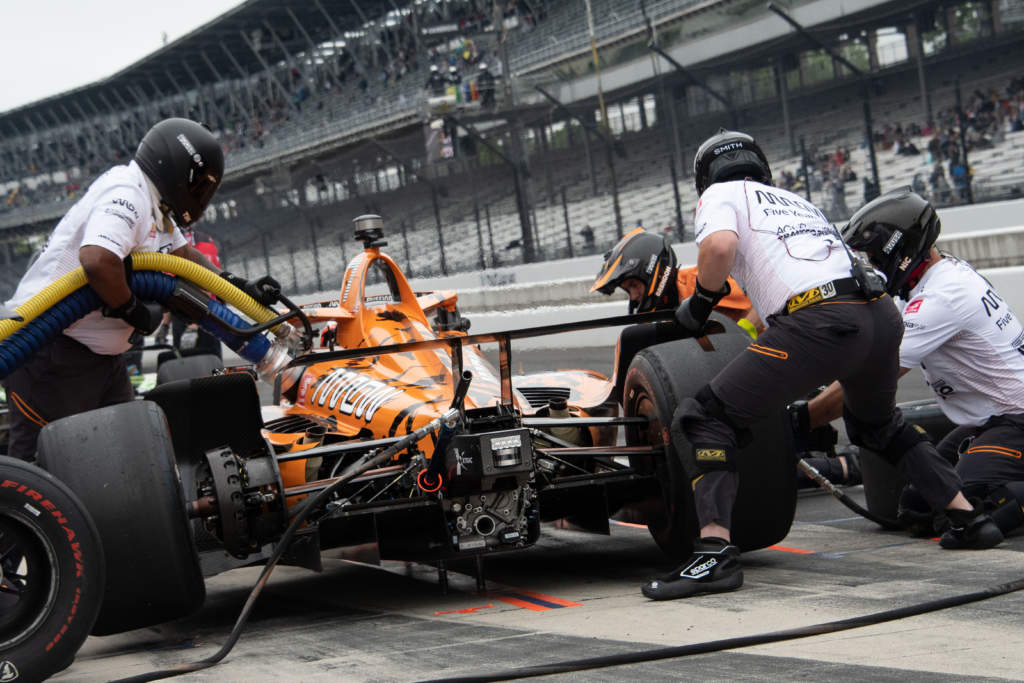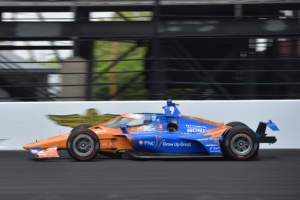Get ready for some fireworks.
The introduction of the aeroscreen device in IndyCar last year saved lives. But it also added a spanner in the works at Indianapolis, one that – combined with other factors – made the racing quite dull, at least by Indy 500 standards!
With the added weight of the aeroscreen high up and at the front of the car, and with the not very aerodynamic shape of it, cars struggled with understeer when following another car in dirty air. It made overtaking extremely difficult.
With the pandemic interrupting things, IndyCar hardly had time to make any big tweaks for Indy in 2020 – the first with the aeroscreen – but this year it’s come with the culmination of 18 months’ worth of work with its technical department and chassis manufacturer Dallara.
This year, teams have three significant improvements. There’s ‘bargeboards’ coming off the front of the floor, strakes in the diffuser and a bigger hole in the floor next to the sidepod.
Lost already? Don’t worry, we’ll explain, with pictures.
The diffuser strakes
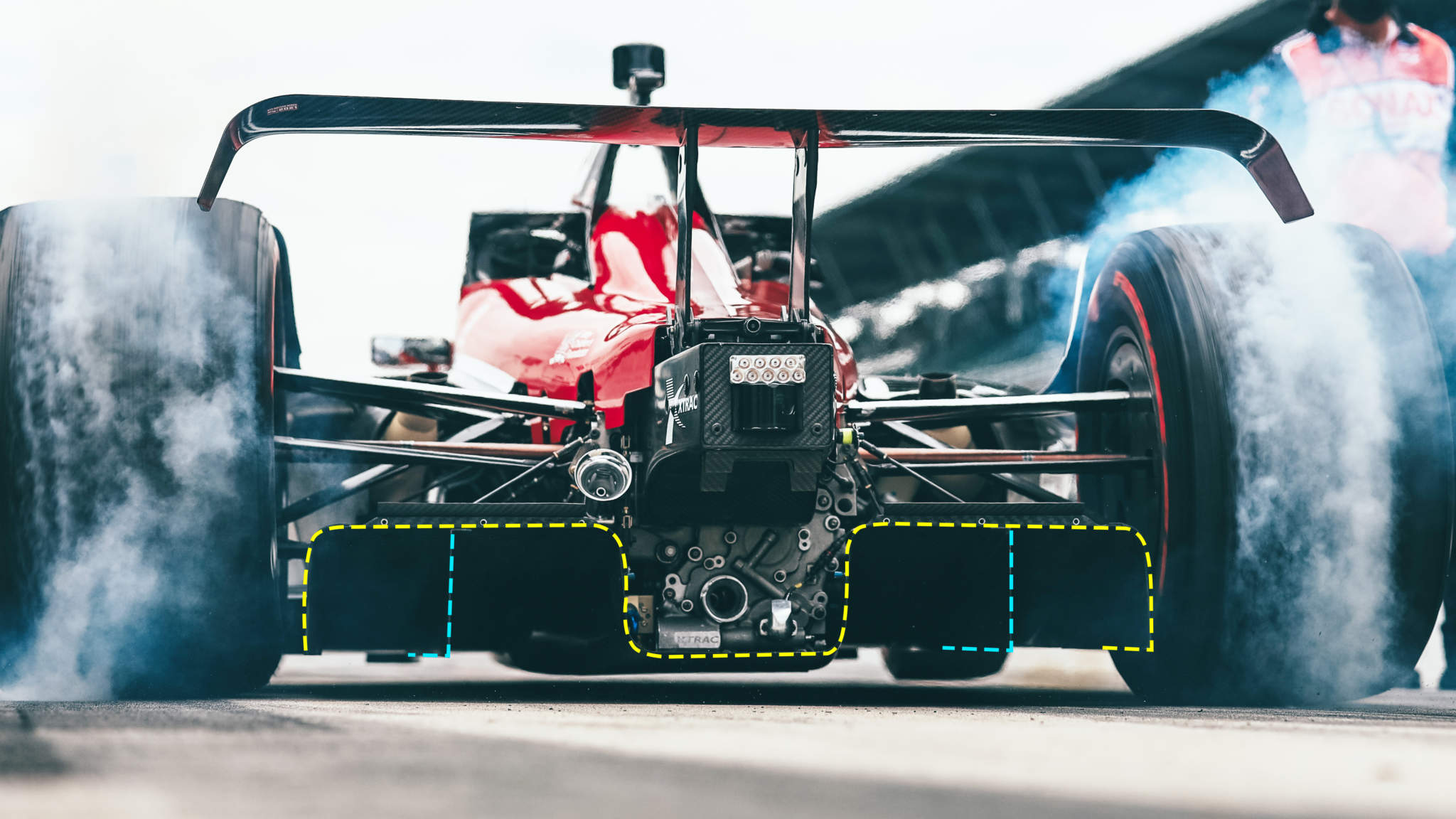
In the picture above, the diffuser is represented by the yellow line, and the strakes by the blue lines.
These are used on IndyCar road courses and aren’t completely foreign to ovals either, having been used at Pocono in the past.
Not at Indy though, where in the past they would have provided too much downforce at the rear compared to what the front is producing. But with the changes this year increasing front downforce they’ve become available to teams.
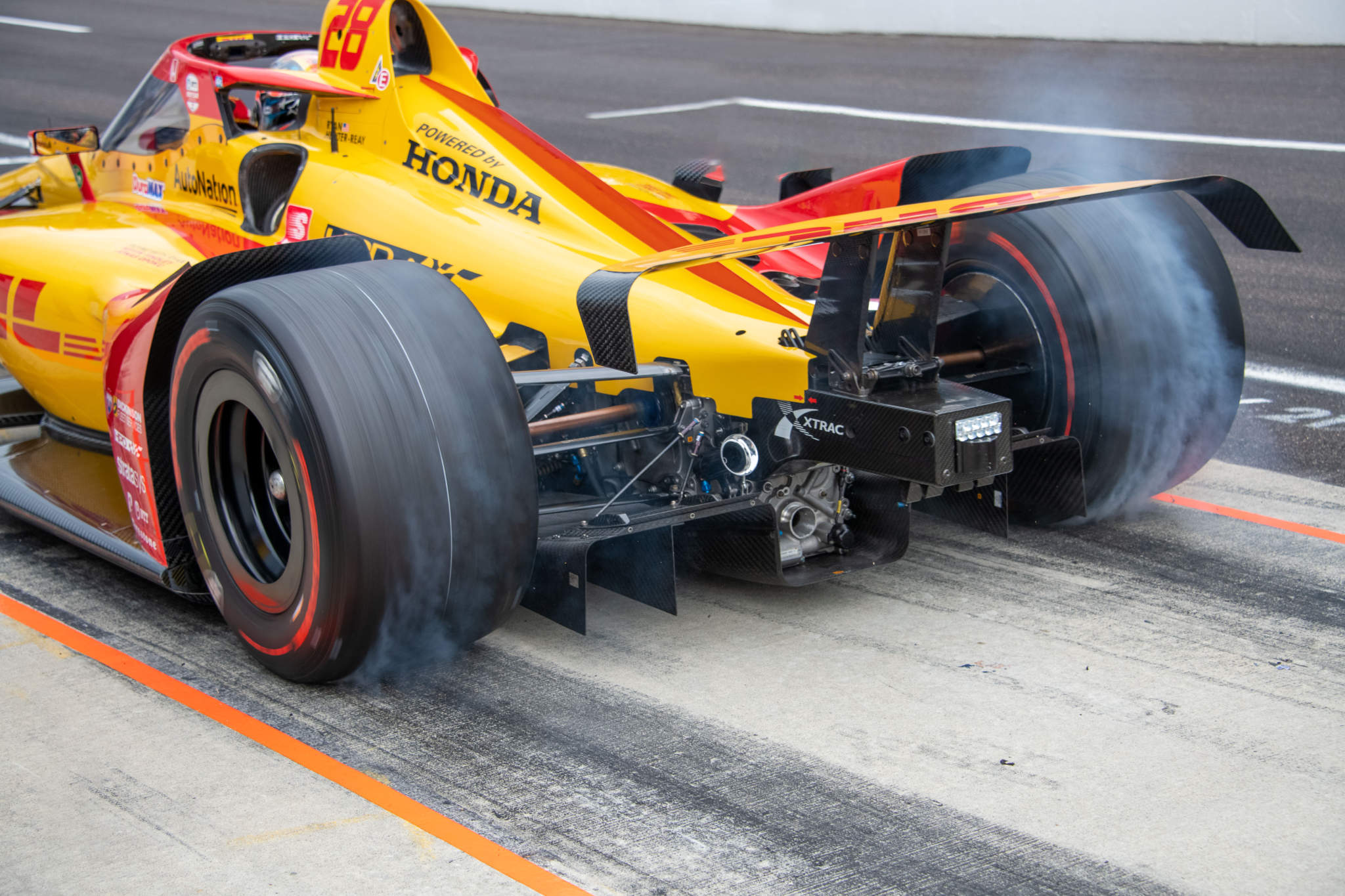
You can have one strake either side of the centre of the car, and these help speed up airflow under the car, creating a greater variance in pressure between under the car and above, effectively kicking energised air out of the back and sucking the car closer to the ground.
At least for race running, the strakes have proven popular with teams and believed to be a good downforce gain for minimal drag. Most teams ditched them for qualifying.
Hole in the floor
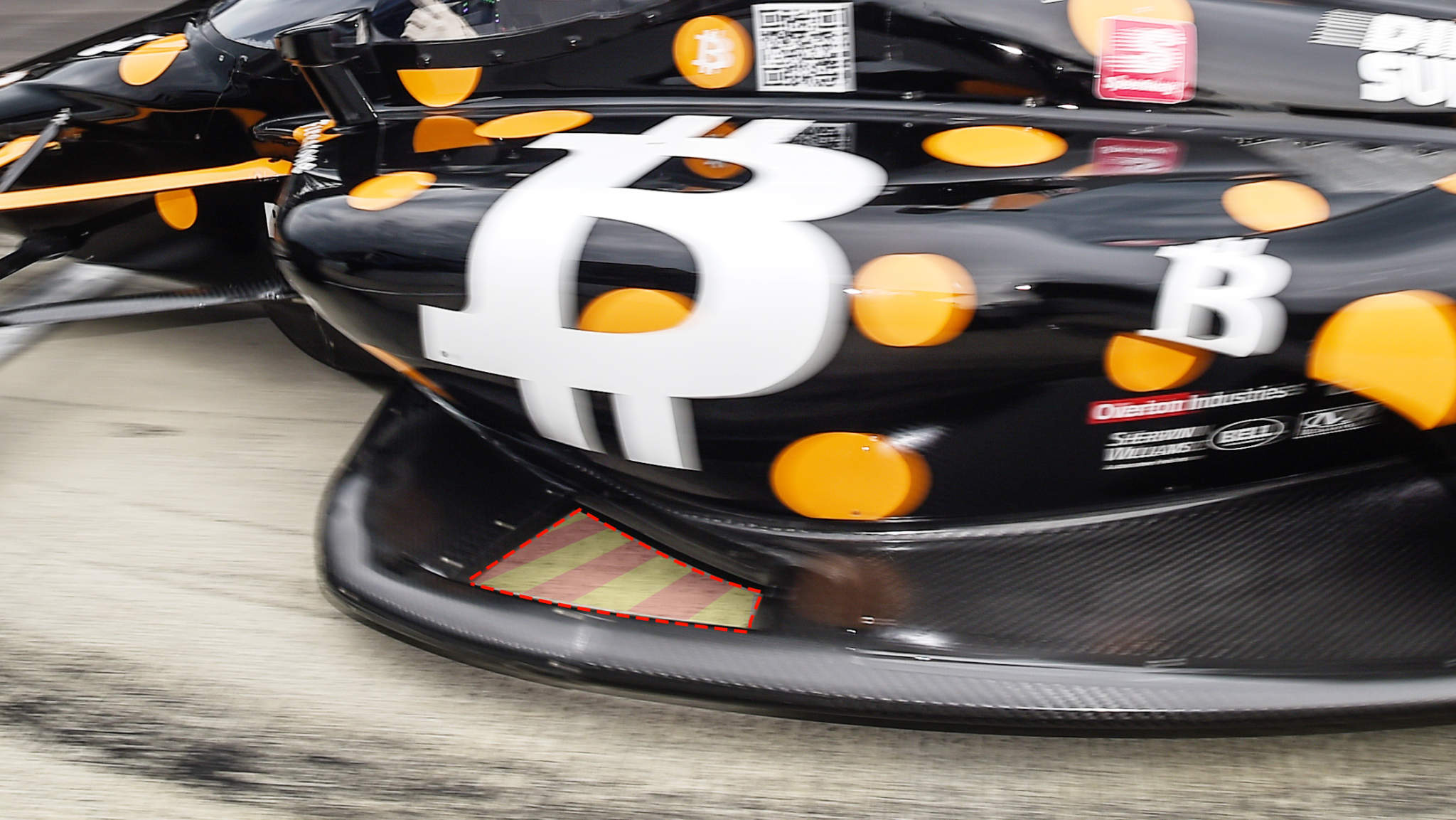
This was never designed as part of the DW12 chassis, but to make it more stable and to not flip over or hover in an accident, the hole was added.
In 2021 it is smaller and has a purpose-shaped wing going from behind the leading edge (pictured in blue), helping to create more downforce. This hole is a mandated size, so there’s no wiggle room for the teams here. You can see the hole outlined in red above.
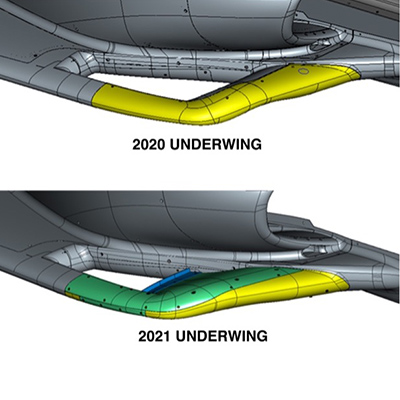
“We wanted to reduce the amount of work the front wing does,” IndyCar’s director of aerodynamic development Tino Belli told the series’ website, in a feature which also utilised the picture above.
“The amount of downforce necessary has grown over the years with the gradual addition of weight with the AK-18 sidepods and the safety-inspired aeroscreen. The new downforce created by the underwing has done exactly what it was supposed to do.”
In the picture the yellow is the leading edge of the floor. The green is a carbon fibre shell piece helping to direct airflow.
‘Bargeboards’
This is a piece that extends from the front of the floor of the car, behind the wheels. It’s only small and is barely visible unless up close, but it helps to attach and redirect the airflow from the front wing over the newly-shaped hole and around the side pods.
These are optional for teams.
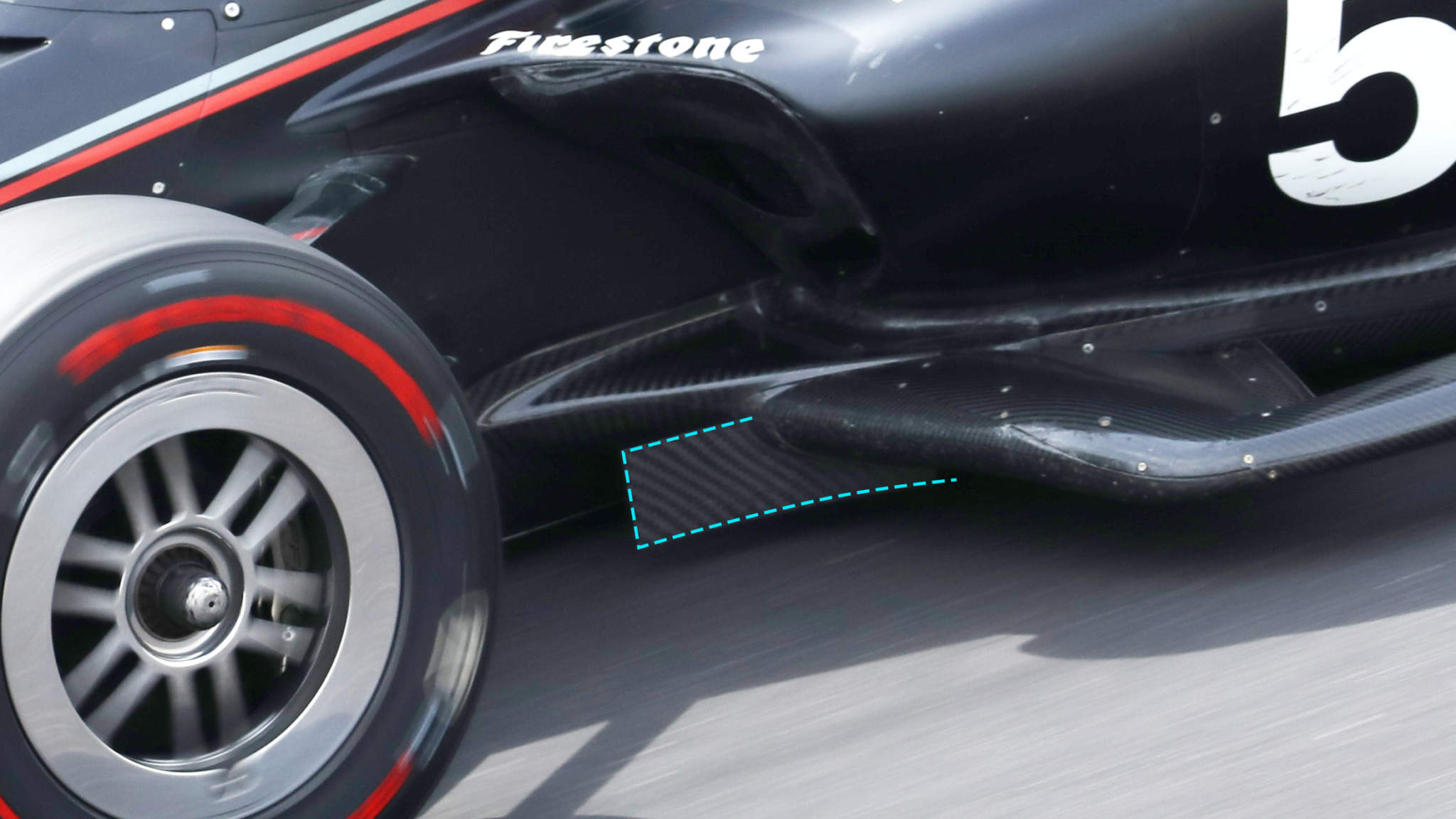
So, that’s the devices themselves taken care of. In his typically eloquent way, let pole-sitter Scott Dixon summarise.
“I think the big push for what we [IndyCar] have done is filling in the front part of the hole, we have the bargeboards and the strakes,” he explained when asked about the aero configuration by The Race.
“What they all do is move the centre of pressure forward without requiring a lot of front wing angle. You’re just trying to make the front wing less sensitive.”
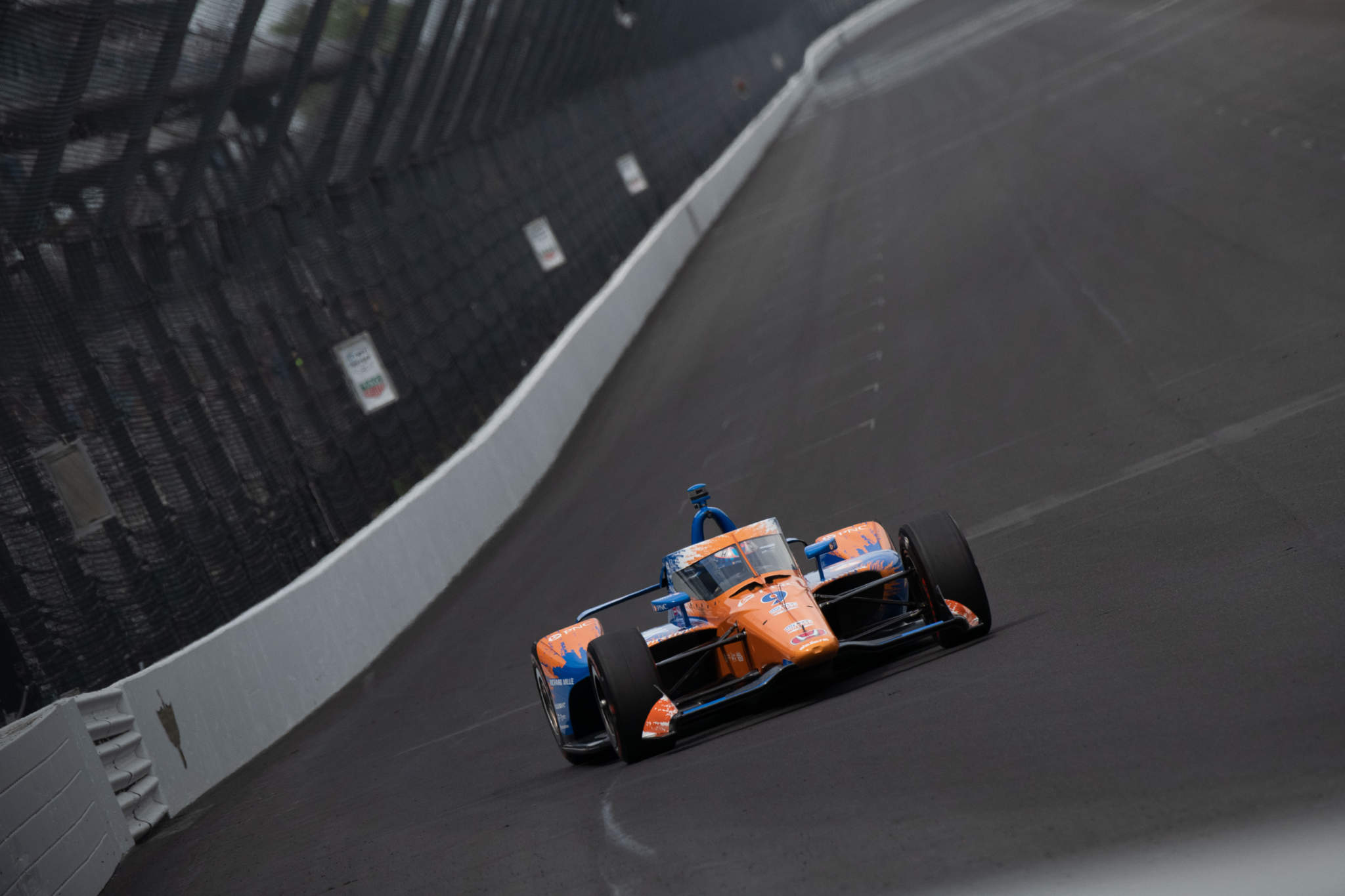
Previously, before these new parts, teams were almost totally reliant on the front wing to create front downforce. Now the teams can find downforce in other areas and afford to run lower front wing angle, reducing the likely hood of the wing stalling while following another car.
That means less understeer, and the ability to follow and potentially pass the car in front more easily.
In recent history, teams and drivers would trim (remove downforce) for qualifying, and then add it back on for the race where running in traffic and dirty air would mean you would need the added grip.
With these new parts, if the conditions are cooler on Sunday as anticipated, we could get some brave drivers and teams trimming more than usual because of the total downforce added this year.
Teams have been experimenting with running the diffuser strakes and bargeboards, one without the other, neither and both, in a bid to find an edge ahead of the race.
The issue with trimming is, it’s almost certain that you’ll need to save fuel in the race and you’ll be lifting as part of a pack, so the extra speed you gain isn’t utilised. Plus, you may end up working your tyres just as hard as someone with a lot of downforce, if you start to slide the car around and add the loads created by greater speeds.
There was some divergence in qualifying but most teams didn’t use the diffuser strakes, adding those and the bargeboards back in for the race.
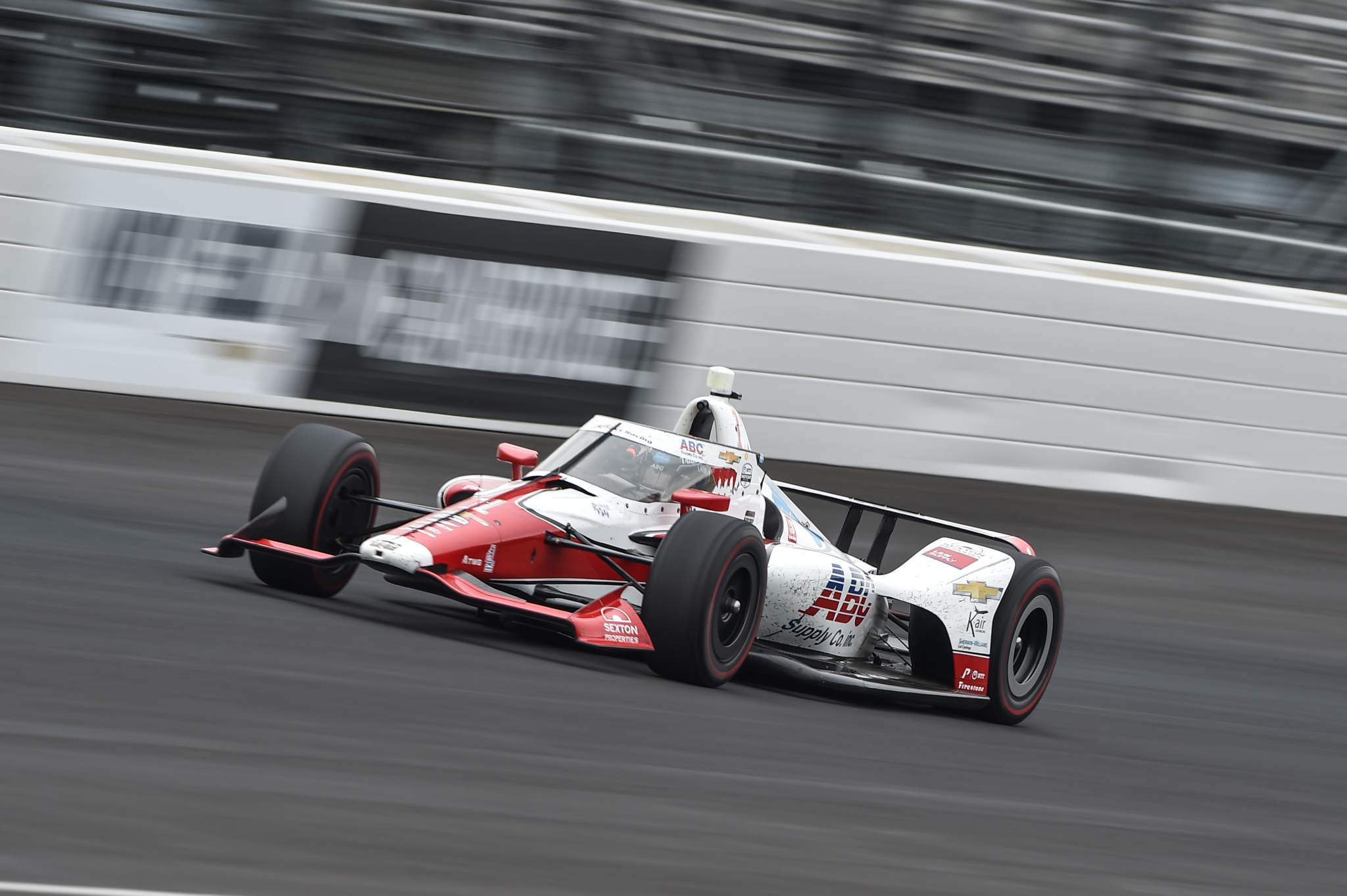
Teams have also been playing around in practice this week with rake – yes, it’s a thing in IndyCar too – to see if they can get the package of the new cars working better with variations of angles of attack on the car.
The bargeboards are likely to work better in a low-rake ride height configuration while the diffuser strakes should work better in a high-rake ‘Red Bull’, double diffuser kind of vibe. But it’s not as simple as going low rake for the bargeboard or high rake for the diffuser, because there are more parts in the mix, all of which are impacting the centre of pressure on the car.
Won’t the big teams just converge on the same set-ups anyway?
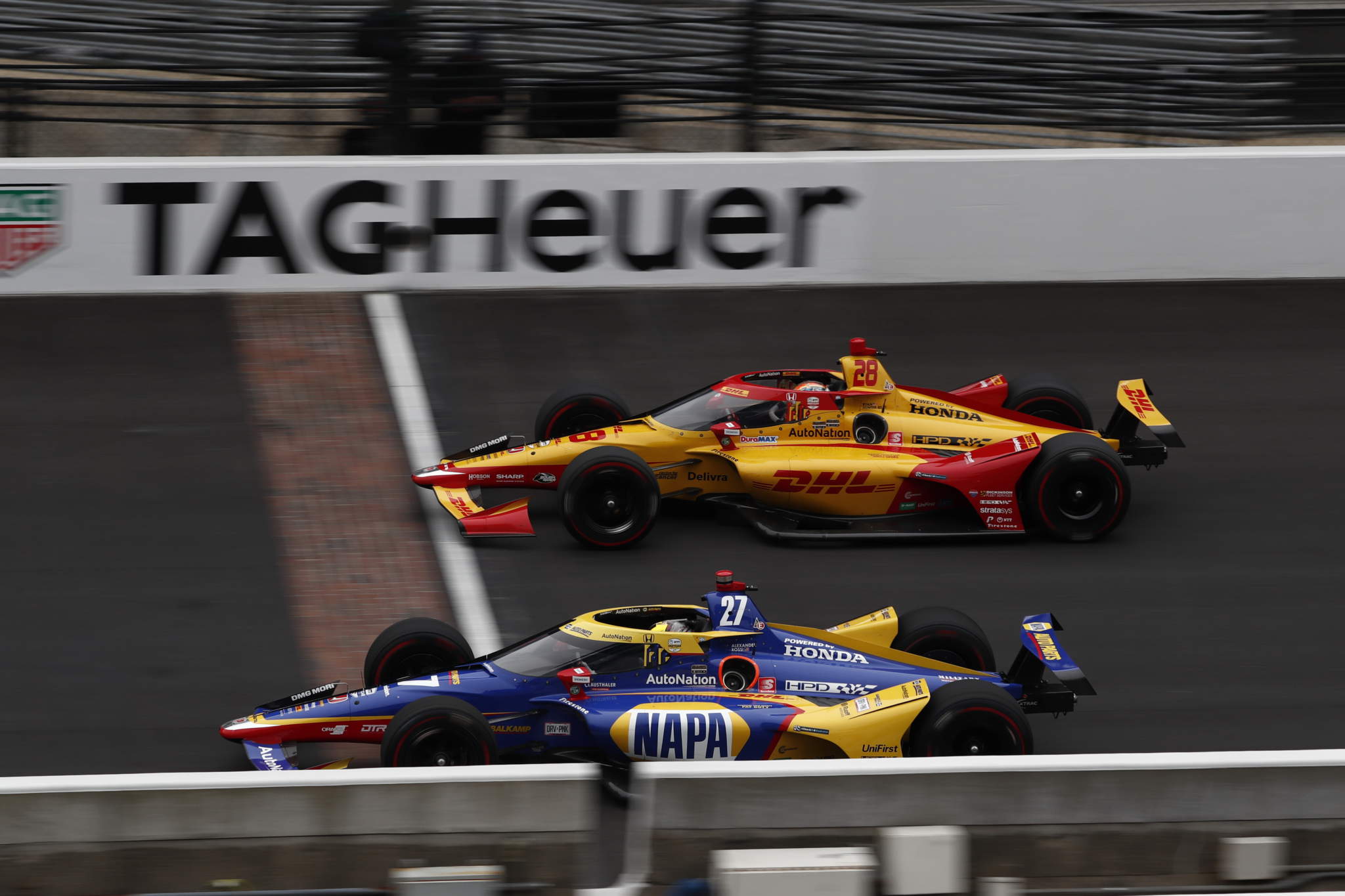
Absolutely not! When asked by The Race if Arrow McLaren SP had converged, Pato O’Ward said that Juan Pablo Montoya was the outlier in terms of his aero configuration at the team. But when put to Montoya, he said O’Ward was the one with the unusual set-up, and he and Felix Rosenqvist were closer together!
The Race asked Colton Herta, who qualified second behind Scott Dixon, the same question.
“It’s been incredibly different with what guys like with [diffuser] strakes or bargeboards/no bargeboards,” he said. “Different aero configurations and very different cars mechanically.
“Although we have seen some similarities between the cars, for the most part set-ups have been weird, it’s really the first time I’ve seen this, and really the first track that I’ve gone to that it’s completely different between a lot of people.”
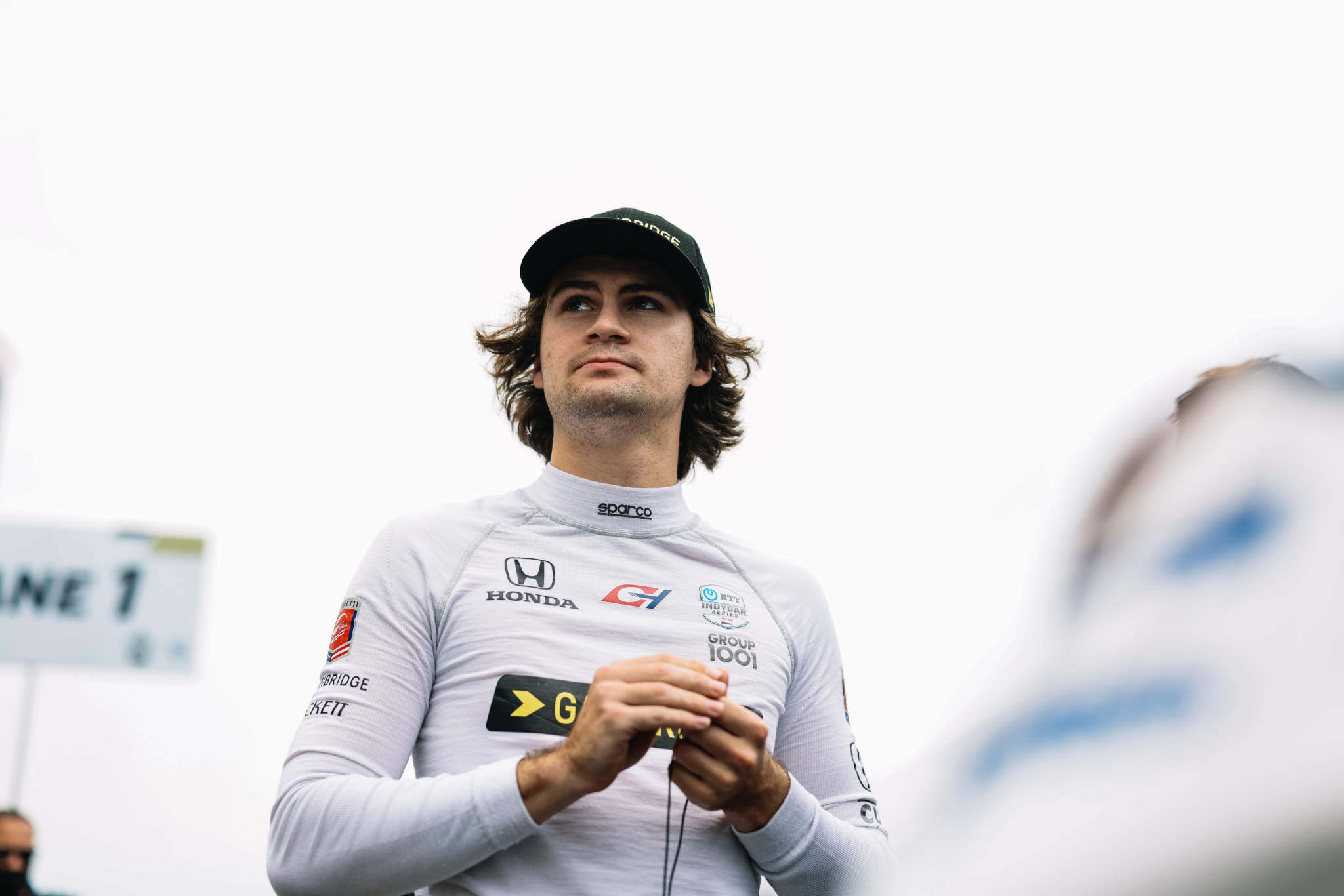
Dixon believes there will be an element of convergence on a prevailing “best package” but also that the overall set-up of the car combined with the use of these parts is a big factor. For example, if you don’t know what ride heights teams are using it’s hard to get an exact reading of what they’re doing with their cars and, therefore, to know whether they have found something better than the opposition.
“At least from what I’ve seen I think everyone is going to be pretty similar,” Dixon said when asked by The Race.
“The differences you can’t see are ride height configurations and maybe the rear wing, that sort of stuff.
“I think there’s been some interesting scenarios with the combination of all of them which I think some teams have felt. We’ll have to see how that plays out.
“But I think, with the weather conditions being probably cooler and more favourable, I think it won’t play as much of an issue.
“I think they’ve tried to make the racing a little bit tighter but I think we’re we’re going to see that because of the weather as well. It should be a pretty tight pack.”
The benefit for those big teams is that with multiple cars not only have they worked through the options quicker than the smaller teams, they have more data across entries. That’s not to say the smaller teams won’t have had time to arrive at the same conclusions, but it’s more likely they would have missed something for this reason. For the good of the show and parity, let’s hope that’s not the case.
Will drivers be able to come from the back of the pack to the front?
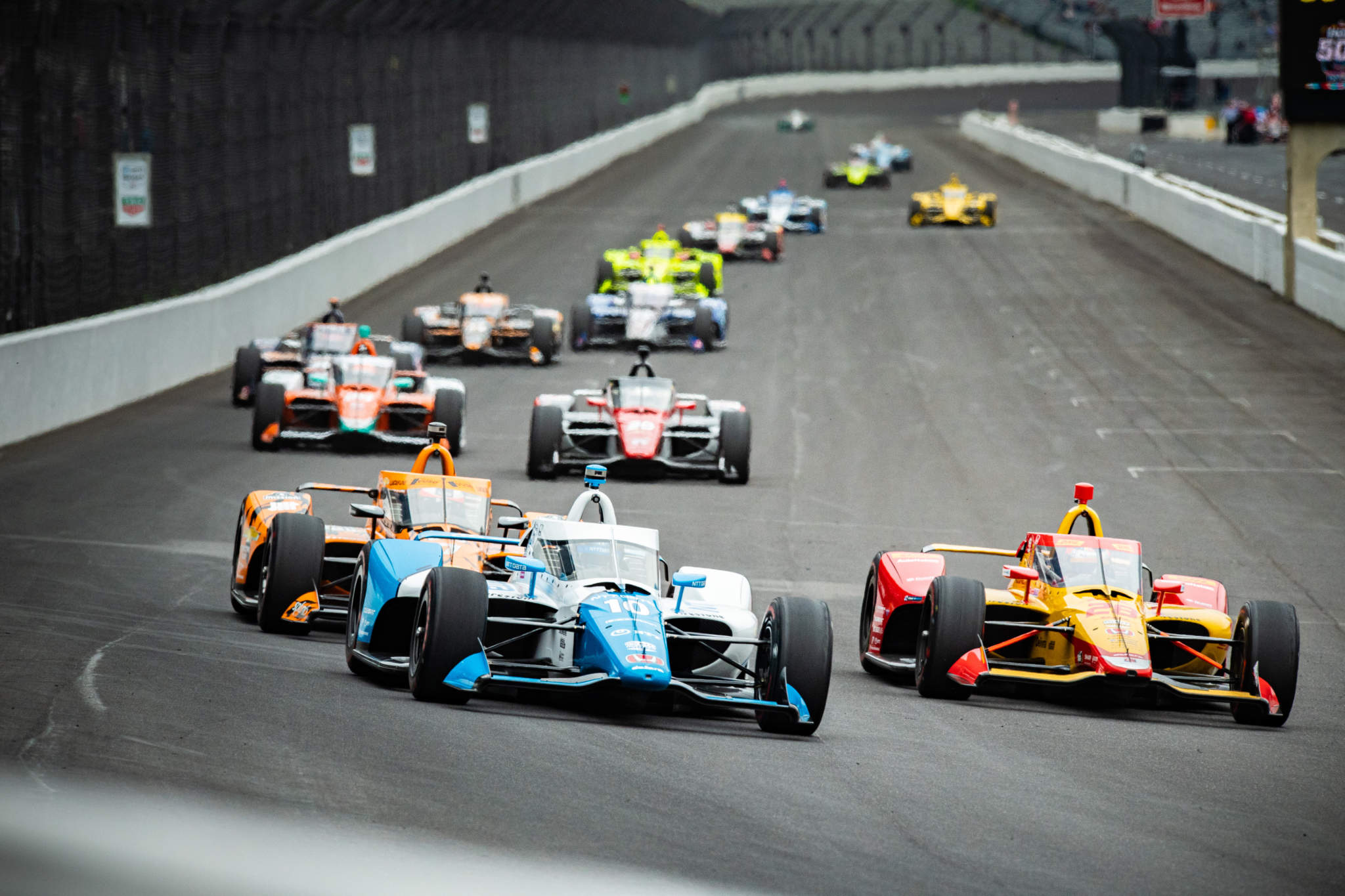
This is where things become unclear. The unanimous message from the first few days of practice was that the drivers believe the first four cars in a train will pass freely, and that keeping the lead will be extremely difficult. After that, from car four or five in the train back, passing was/is expected to be difficult.
Fast forward to media day on Thursday and there are distinct camps of drivers that believe moving through the field will be possible. Whether that’s because those drivers are starting further back and don’t want to rule out their chances, or perhaps they have been advised from a PR perspective not to rule out the possibility of overtaking before the race, it’s not clear.
I believe that the drivers think overtaking will be easier than last year and possible, but no one is going to overtake 20 cars during a stint and just walk to the front of the field. Rising to the top is not going to be an easy task despite these aero changes.
It’s clear after the ‘Carb Day’ Friday practice that if the conditions are cooler, that will allow much easier overtaking and provide a better show for the fans, even if Dixon questions whether that also equals better racing because passing will be easy, and the drivers starting up front obviously won’t want that.


